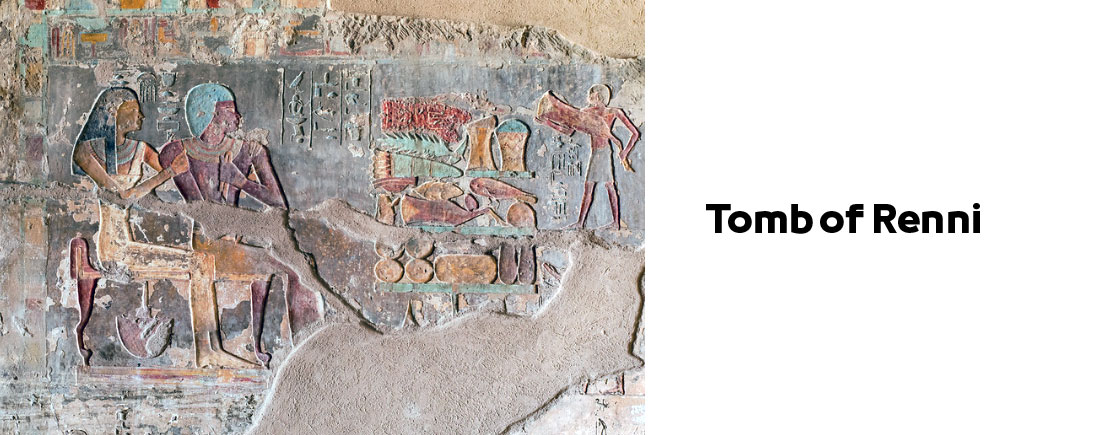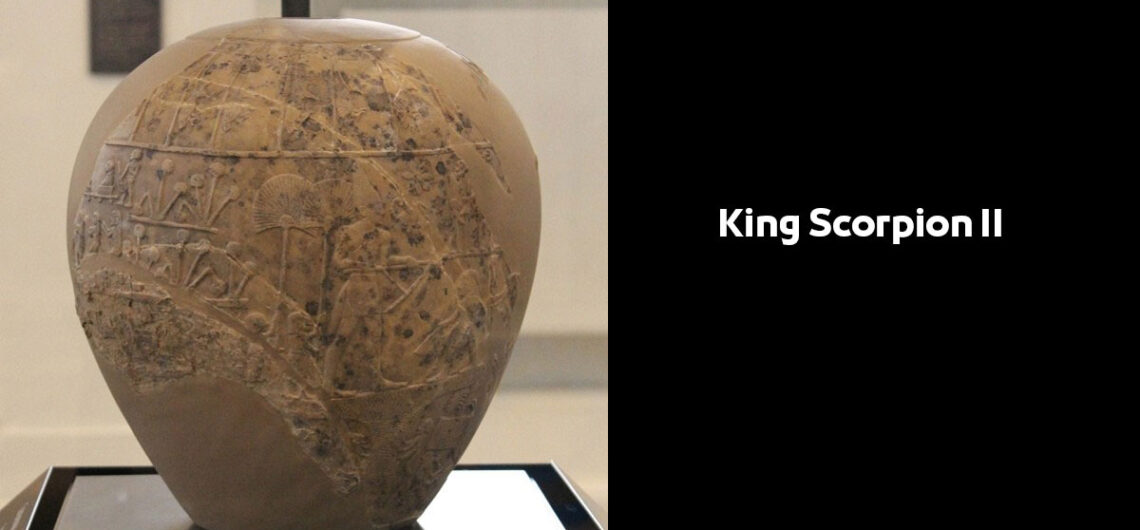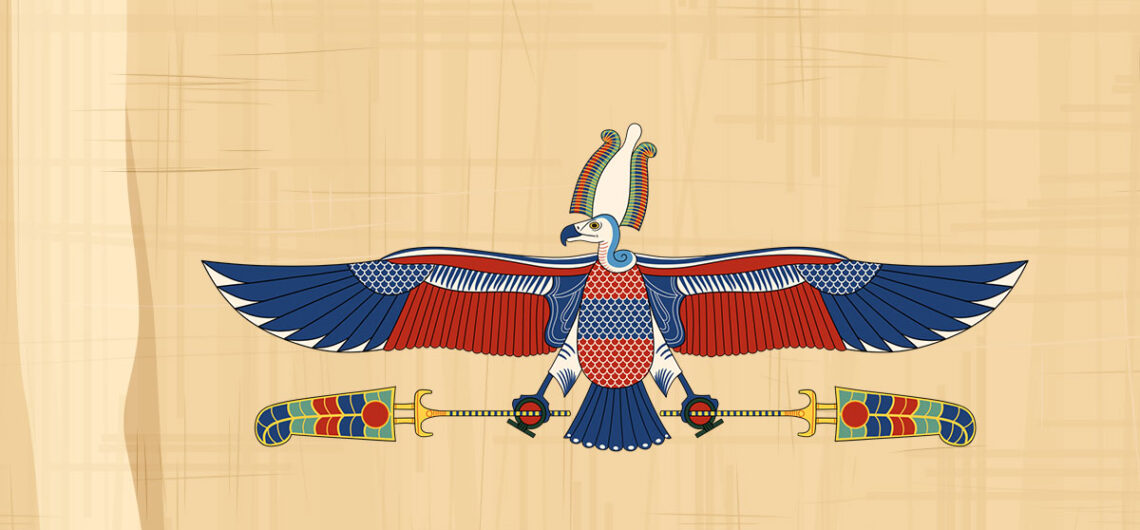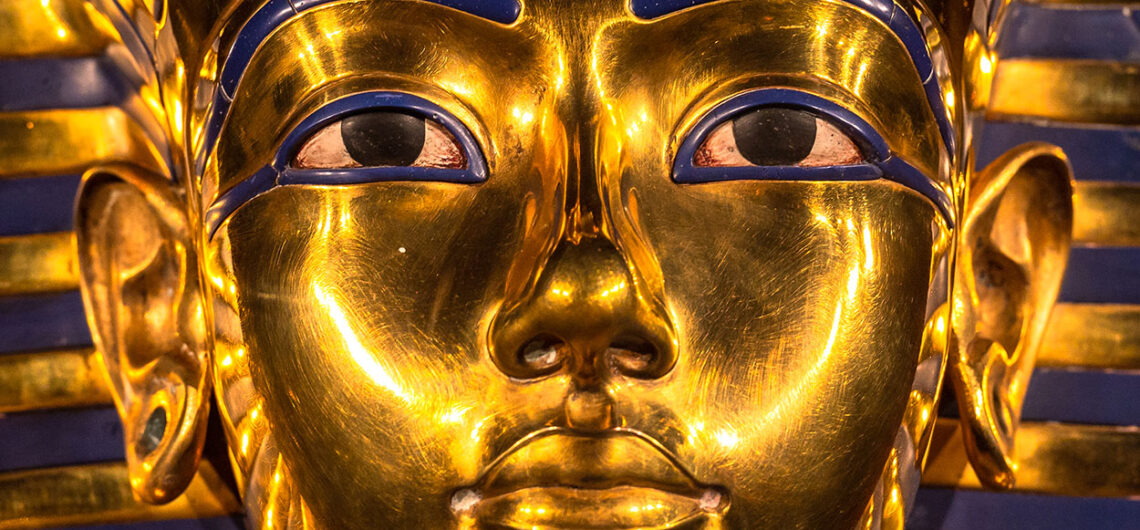Tomb of Setau in Tombs of El Kab Edfu, Aswan, Egypt | Egyptian Tombs Discover the historical facts and secrets of building the most important Egyptian Pharaonic tombs in the ancient Egyptian civilization and what are the most important drawings and engravings on the walls of the tomb, the plan from the inside and how to reach it and more about Ancient Egypt History. He worked as the high priest of the temple of
Tomb of Renni in Tombs of El Kab Edfu, Aswan, Egypt | Egyptian Tombs Discover the history of the Pharaonic civilization, historical facts and secrets of building the most important Egyptian Pharaonic tombs in the ancient Egyptian civilization, what are the most important drawings and engravings on the walls of the tomb, the plan from the inside and how to reach it and more about Ancient Egypt History. He worked as the general supervisor
Temple of Amenhotep III in El Kab Aswan, Egypt – Egyptian Temples The history of the Pharaonic civilization and the secrets of the Egyptian temples, the most famous Pharaonic tourist attractions to discover the Ancient Egypt civilization, the interior plan and architecture, how to get there, and more about Ancient Egypt History. The temple was built in the cemetery area of the ancient city of El-Kab during the reign of King Amenhotep
King Scorpion II
- Pharaohs kings
- Ancient Egypt, Ancient Egypt Facts, Ancient Egypt History, Ashmolean Museum, Dynasty 0, Dynasty 00, Egypt, Egyptian deities, Egyptian Pharaohs, Egyptian Pharaohs kings, Egyptian Temples, Female Pharaohs, Festivals in Ancient Egypt, First Dynasty of Egypt, Flinders Petrie, God Nekhbet, God Serket, Hierakonpolis, History Of Egyptian, King Ka, King Narmer, King Scorpion, King Scorpion I, King Scorpion II, Naqada, Naqada III, Nekhen, Pharaohs, Pharaohs kings, Predynastic Period, Secrets of the Pharaohs, Serekh, Umm El Qa'ab Tombs
King Scorpion II or Selk or Weha “King Scorpion” | The most famous Egyptian Pharaohs kings in the Dynasty 0 in on the civilization of Ancient Egypt in the Predynastic Period. Discover the history of the Pharaonic civilization and historical facts about the Pharaonic king, what are the most important discoveries and secrets of his private life, and more about Ancient Egypt History. King Scorpion II Facts: The last king
God Nekhbet | The symbol, Nekhbet, is one of the most famous ancient Egyptian deities and the religious beliefs of the Pharaohs In the shape of a female eagle with a white crown God of the regions of Upper Egypt and protector of the king in ancient Egyptian civilization.
Ancient Egyptian Metallurgy
- Ancient Egypt civilization
- Ancient Egypt, Ancient Egypt Facts, Ancient Egypt History, Ancient Egyptian Amulets, Black Pharaohs, Egypt, Egypt Archaeological Sites, Egyptian Antiquities, Egyptian deities, Egyptian Pharaohs, Egyptian Pharaohs kings, Egyptian Temples, Egyptian Tombs, Female Pharaohs, Flinders Petrie, God Nekhbet, God Wadjet, History Of Egyptian Civilization, King Ramses II, obelisks, Old Kingdom, Pharaohs, Pharaohs kings, temple of El Radisia, The Egyptian Gods, The New Kingdom, Thebes, Turin papyrus
Ancient Egyptian Metallurgy | Gold of the Pharaohs | How did the ancient Egyptians Extract silver and copper in the Pharaonic civilization of Egypt, What metals and precious stones were used in making Statues and Egyptian Antiquities, Building Mortuary Temples, and more about Ancient Egypt History. Facts and history of the most important minerals used by the ancient Egyptian pharaohs, such as silver, copper, iron, the most important gold mines
Tombs of El Kab Or Elethya in Edfu, Aswan, Egypt | Egyptian Tombs Facts about the most important Egypt Archaeological Sites and the history of the Pharaonic civilization to build the most important areas and Egyptian Pharaonic tombs in Aswan and what they contain of Egyptian Temples and Pharaonic Egyptian Monuments and the most important discoveries and what are the working hours and entry ticket prices and more to discover






